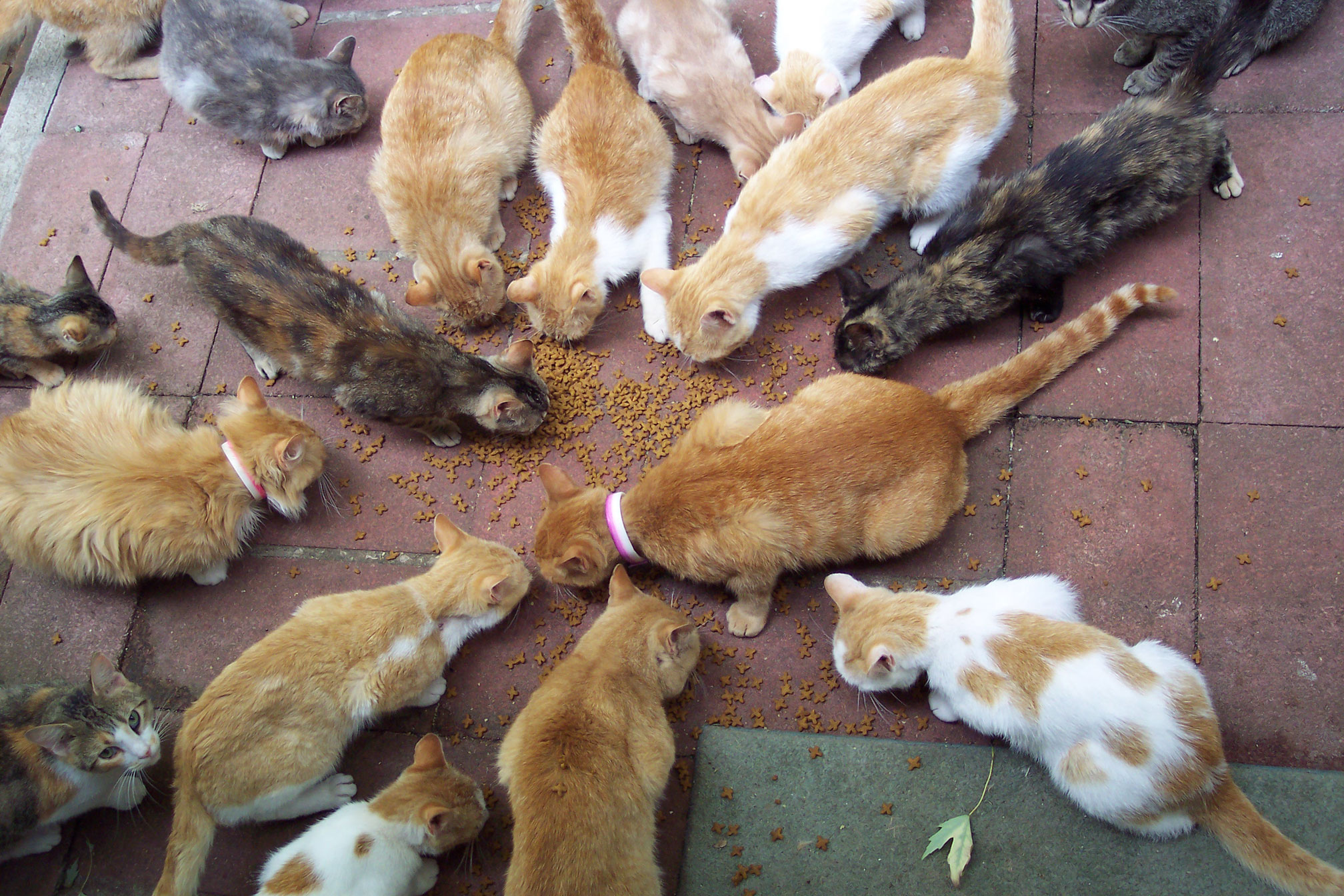Athens, Ga. – Scientists have long known that providing supplemental food for wildlife, or resource provisioning, can sometimes cause more harm than good. University of Georgia ecologists have developed a new mathematical model to tease apart the processes that help explain why. Their research, which has implications for public health and wildlife conservation, appears in the Royal Society journal Biology Letters.
Wildlife of many kinds are increasingly finding their meals in human environments, gathering at places like backyard bird feeders, landfills or farms that offer an easily accessible year-round source of food. As with people, however, when large numbers of animals congregate they can face a higher risk of contracting disease. A number of studies have found large disease outbreaks following the introduction of supplemental food resources, as in the case of Hendra virus in flying foxes in Australia. Others have shown just the opposite, with disease transmission slowed or eliminated, as with gut parasites in macaques in Bali.
A desire to understand this puzzling disparity in disease outcomes motivated the study by Daniel Becker, a doctoral student in the Odum School of Ecology, and co-author Richard Hall, assistant research scientist in the Odum School and the College of Veterinary Medicine department of infectious diseases.
“This activity is important for wildlife conservation and human health,” said Becker. “There are more and more examples of provisioning affecting disease risk. By creating resource hot spots, we’re essentially providing opportunities to bring together wildlife, domestic animals and humans, offering chances for pathogens to spread between species.”
Providing food for wildlife-whether intentionally, as with bird feeders or feeding stations for feral cat colonies, or unintentionally as in the case of garbage dumps-can cause changes to an animal’s breeding success, foraging behavior and body condition that in turn influence its risk of acquiring harmful infections.
A steady, easy-to-access source of nutrition can increase the size of a wildlife population by improving reproductive success and increasing animals’ life spans. A larger pool of uninfected-and therefore susceptible-animals can fuel disease outbreaks and increase the chance that the population remains infected over longer timescales.
Furthermore, gathering around feeding stations leads to more contacts between animals, increasing the chances that sick individuals will pass on their infection to others.
Easy access to food also improves body condition, allowing animals to mount more effective immune defenses. This can reduce infection levels in wildlife by allowing animals to successfully fight off pathogens before they become infectious. Conversely, if improvements to immune defense cause sick animals to live longer, they may pass on infection to more individuals throughout their lifetime.
“You’ve got these opposing processes, with factors such as aggregation and larger population sizes potentially aiding disease spread, and improved ability of animals to resist infection making it harder for the disease to spread,” said Hall.
“Figuring out how these all work together to influence population-level disease outcomes isn’t really straightforward,” added Becker. “It helps having a formal model to look at how these processes together all play out.”
For their model, Becker and Hall used data from studies of feral cats with feline leukemia virus that visited supplemental feeding stations. They looked at how birth rate, death rate, contact rate and the strength and speed of immune system response were influenced by the amount of supplemental food the animals were able to access.
The model revealed that a key factor in predicting disease outbreaks in wildlife that access supplemental food was how that additional food influenced the strength and speed of the immune response. And more food wasn’t necessarily better. Under some scenarios, even low levels of supplemental food could increase the risk of outbreaks compared with wild-feeding populations. In other cases, a small amount of supplemental food initially drove down infection levels, but too much led to the population size growing so large that the increased opportunities for infection to spread overcame the animals’ immune defenses, with large outbreaks possible.
The authors said that their results point to the urgent need for more field and laboratory studies to explore the relationship between resource provisioning, immune defense and disease.
“As the planet becomes more urbanized, wildlife are increasingly coming into cities to use these resources, and then they can come into contact with domestic animals and humans, with potentially the risk of infections spilling over across species,” Hall said. “For people who put out food for birds, wildlife or free-roaming feral cats, it’s important to understand that supplemental feeding can have these unintended consequences of enhancing disease transmission.”
He advised that if people notice sick animals at their feeding stations, the best course of action is to remove the food source to allow the uninfected animals to disperse, and to clean feeders regularly and thoroughly.
Providing supplementary food is also a frequent management action as part of recovery plans for rare and threatened wildlife, but Becker and Hall urged caution before applying this strategy in species vulnerable to diseases causing high mortality, such as rabies.
“We really need to do more research to figure out how immune response depends on supplementation,” Hall added. “The modeling study illuminates where we should be focusing experimental efforts.”
The full research article is available at http://rsbl.royalsocietypublishing.org/lookup/doi/10.1098/rsbl.2014.0309. A UGA Graduate Research Assistantship and a National Science Foundation Graduate Research Fellowship supported this study.
UGA Odum School of Ecology
The UGA Odum School of Ecology, the world’s first stand-alone school dedicated to ecology, is creating the future of ecological discovery through innovative research about the rapidly changing planet, educating the next generation of ecologists and applying knowledge in service to the broader public. For more information, see www.ecology.uga.edu.


